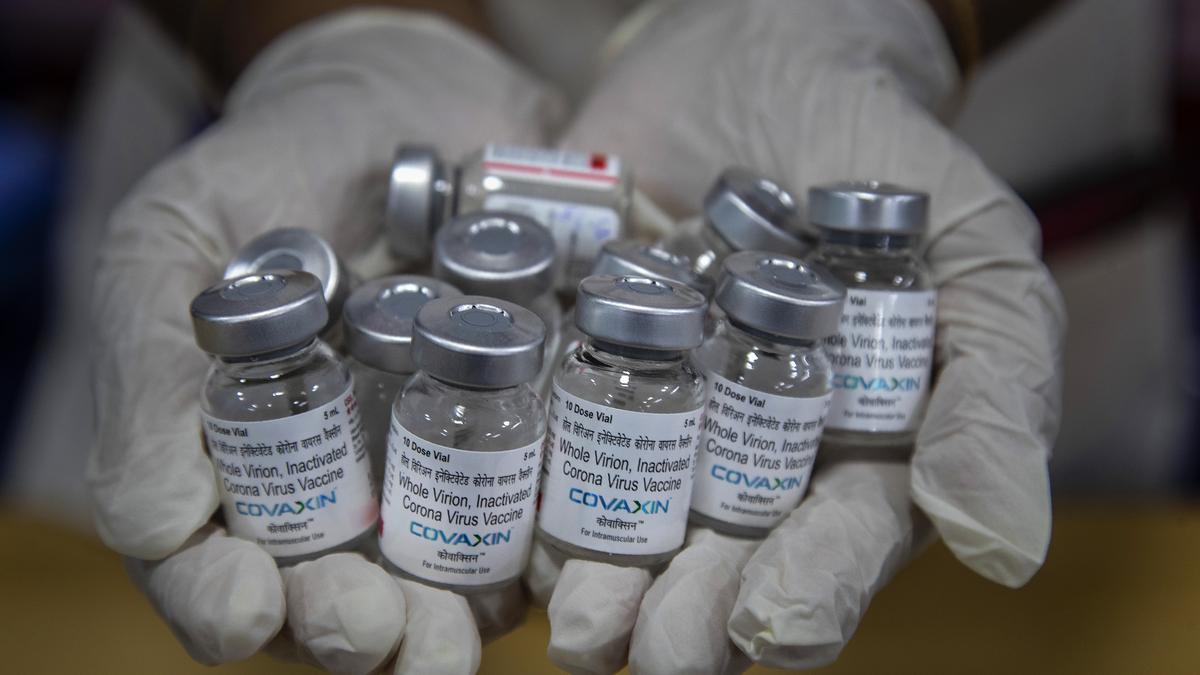
The many faces of health research
The Hindu
This week in Health Matters newsletter: agenda of the World Health Assembly, a ‘chilling cover-up’ of the U.K.’s infected blood scandal and how general anaesthesia works in the brain.
This week in health: agenda of the World Health Assembly, a ‘chilling cover-up’ of the U.K.’s infected blood scandal and how general anaesthesia works in the brain.
We just missed it last week, by a whisker. As the newsletter left our outbox, the news of the Indian Council for Medical Research distancing itself from a Banaras Hindu University study acknowledging it in a safety study on Covaxin landed in the inbox. By no means is this usual, even in the highly fractious world of scientific research.
The ICMR, after the article was published, issued a letter to the researchers, which naturally found its way into social media, casting doubts about the BHU study, denying its own involvement in any form, but also calling for its retraction. While pointing out the limitations of any study is par for the course in research, and justifiable as they were, the original study did also mention as limitation the fact that the observational study went ahead without a control group. The absence of data on background rates of adverse events assessed as part of the study makes it clear that further investigation into its conclusions is necessary, as R. Prasad explains here.
Nevertheless, the ICMR’s action found detractors as well. Foremost among them was the Universal Health Organisation (UHO), a group of researchers, doctors, and public health experts, who echoed the research ecosystem’s shock at the belated denial. The UHO wrote an open letter to the ICMR stating the BHU study filled a key gap in terms of field data, analysing the safety of Covaxin, and took strong objection to the Institute not declaring its vested interest - the ICMR’s National Institute of Virology co-developed the vaccine along with Bharat Biotech. Also, they wondered why the ICMR, which had access to data from the control group, had not published the long-term safety trials. No doubt, the hurry during the COVID-19 pandemic necessitated the rapid tracking of scientific processes, to do great good, but post facto, it is important to conduct regular research to understand how these interventions have worked on the human body. Keeping track of the safety and efficacy of vaccines is a lifelong process, and the country’s top research institute inhibiting such activity does not bode well for the scientific community.
Another crazy health story we had to bring to you is the chilling expose of the U.K.’s infected blood scandal. Did you know? Between the 1970s and 1990s, more than 30,000 people were infected with HIV, Hepatitis C and Hepatitis B after receiving contaminated blood and blood products imported from the U.S. — making it the “worst treatment disaster” in the history of Britain’s state-funded National Health Service (NHS). Saumya Kalia explains what the enquiry report revealed last week, and the ‘chilling cover-up’ of the U.K.’s infected blood scandal. The six-year-long inquiry uncovers a coverup that was “more subtle, more pervasive, and more chilling in its implications” than an orchestrated conspiracy. It was undertaken “to save face and to save expense”. The calamity was made more catastrophic by the “defensiveness of government...and its refusal over decades to hold a public inquiry.”
Why did it happen? Haemophilia is a rare genetic condition where the blood does not clot properly. Up until the 1970s, treatment options included administering the frozen blood product cryoprecipitate. It carried a low risk of passing on an infection since it was formulated from a single blood donation, but cryo was hard to store and harder to administer to patients. Enter Factor VIII, a revolutionary ‘wonder treatment’ made using concentrating pooled plasma from tens of thousands of donors. It was deemed to be a medical breakthrough. The caveat: Factor VIII had a high risk of infection. This is where ‘chilling’ enters the picture: Despite the warning by the WHO and awareness about the terrible consequences of using contaminated blood, the evidence was ignored. How does any one who has sworn to the Hippocratic oath to ‘do no harm’ go ahead and do just the opposite of that. Literally and figuratively, the history of medicine is steeped in blood.
Setting again on the gender perspective, Sridhar Sivasubbu and Vinod Scaria write how the X chromosome revival in older women increases autoimmune disease risk. Recent genomic studies have shed light on the fundamental biological processes the X chromosome modulates and the genes it encodes. The gathering evidence suggests in fact that it plays a part in a variety of biological functions as well as controls the sex-specific susceptibility to certain diseases. The human X chromosome encodes around 800 genes, which in turn code for proteins. A loss of function of these genes could thus lead to a variety of genetic diseases. In humans, the Y chromosome has been shrinking over time, so the X chromosome is possibly evolution’s best-bet and thus plays a pivotal role in human health and disease. Its evolutionary genomics and emerging insights into its participation in biological processes illuminate the complex interplay between genetic inheritance, epigenetic modifications, and disease manifestation. Cracking all this to get the full picture could also lead us to new drugs and therapies.

Describing the Special Intensive Revision (SIR) drive under way in Bihar as “an invasive reconstruction of the electoral roll,” Dipankar Bhattacharya, general secretary of the Communist Party of India (Marxist-Leninist) Liberation, said States including Kerala should be on guard as it could be applied in other parts of the country as well.





















 Run 3 Space | Play Space Running Game
Run 3 Space | Play Space Running Game Traffic Jam 3D | Online Racing Game
Traffic Jam 3D | Online Racing Game Duck Hunt | Play Old Classic Game
Duck Hunt | Play Old Classic Game










